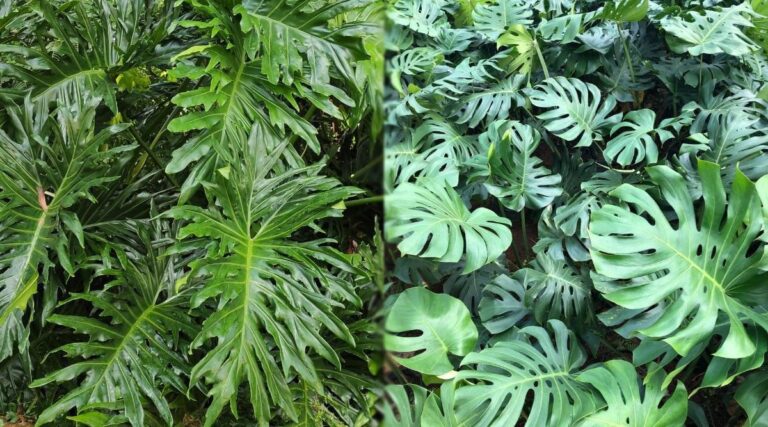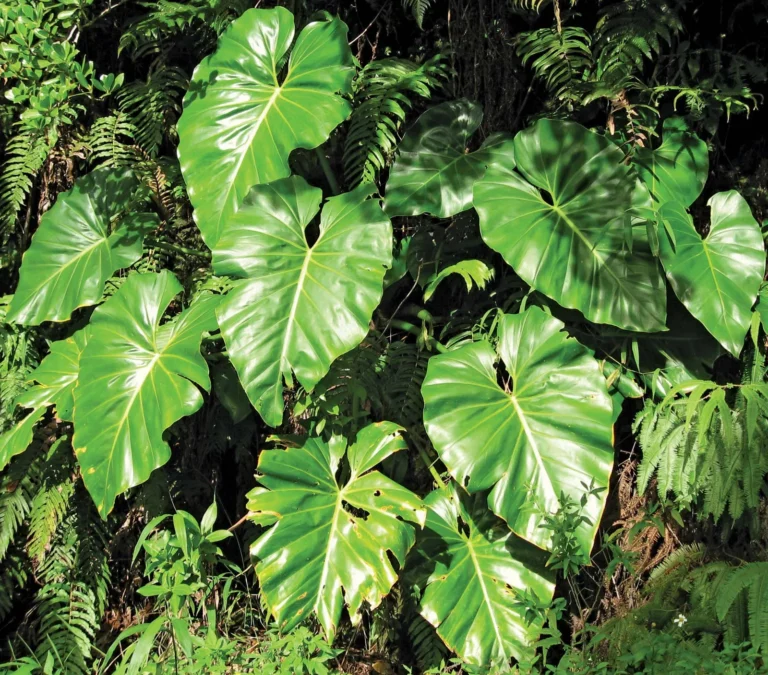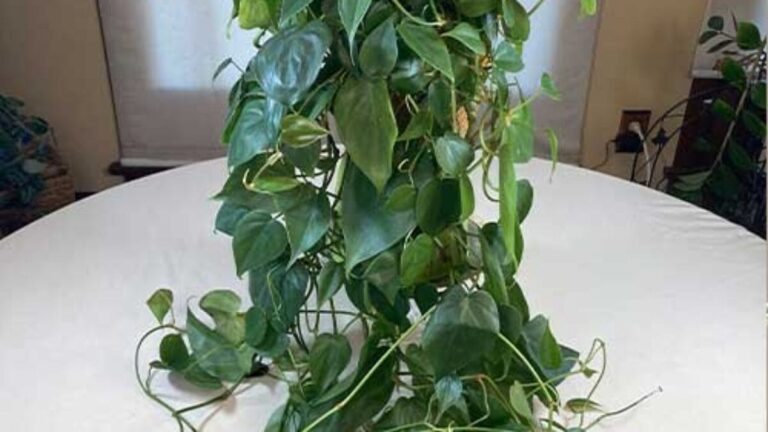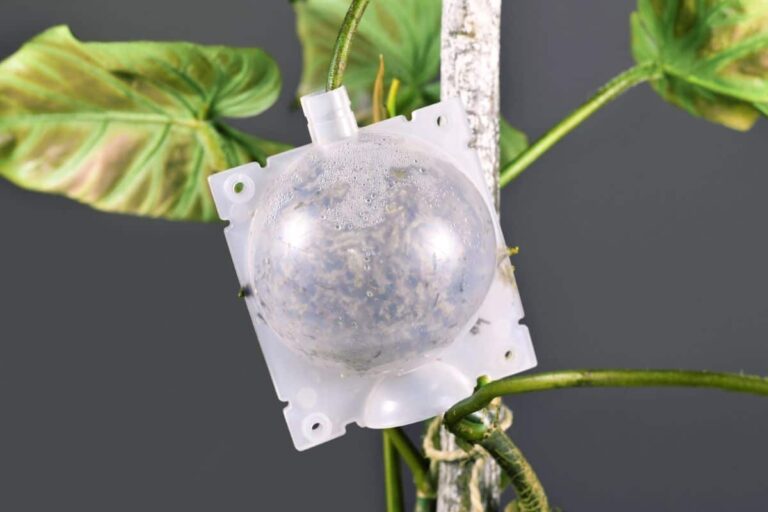Rare Philodendron Investment Guide: 2025 Market Values & ROI Analysis
What if that $50 philodendron cutting could grow into a $500 investment in just 18 months? While the rare plant market has crashed from its 2021 peak, savvy collectors are discovering that certain philodendron varieties still deliver exceptional returns—if you know exactly which ones to buy and when to sell.
Understanding the 2025 Market Correction
The rare houseplant bubble burst officially in 2025 due to three key drivers that permanently altered investment behavior. First, tissue culture propagation was mainstream, adding “rare” varieties such as Pink Princess and Florida Beauty to the marketplace. Second, pandemic-era collectors have become propagate-driven sellers, leading to huge excess supply. Third, economic pressures sparked discretionary spending cuts for luxury plants.
Market Impact A Study: Philodendron Spiritus Sancti fell from $10,000+ specimens to $65-$799 for established plants. Pink Princess sank from $200-400 to $19.95-$32.98 at big-box stores. That said some of the variety retained their 60-80% peak values, opening up selective investment opportunities for knowledgeable resellers.
Rare Philodendron Varieties: Current Market Values & Investment Potential
Tier 1: Top Investment Potential ($500-$5,000+)
Philodendron Spiritus Sancti Current price range: $65-$799 Previously $10k+ mature specimens available for sale at accessible rates. Investment has still good potential due to slow growth rates and ongoing demand from collectors.
Main Investment Point: Buy established plants with more than 5 leaves to minimize risk of seedling death.
Variegated Philodendron Billietiae – Price Range: $99-$5,000 The range is highly dependent on variegation stability and plant maturity.
Investment Strategy: Investigate specimens with a stable style of variegation described (over 3+ growth cycles). Do not use tissue culture plants with unstable variegation.
Philodendron Joepii Variegated – Current range: $400-$500 Tissue culture plantlets have premium pricing, thanks to excellent variegation stability.
ROI time horizons: 18–24 months propagation returns, established specimens improving 40–60% per year.
Tier 2: Intermediate Investment Potential ($100-$500)
Philodendron Gloriosum – What It Looks Like Right Now: $25-$189 Oversaturation of market due to tissue culture has sent price down 70% from peak.
Investment View: Very limited short-term appreciation potential; very useful (propagation based) for investment. Purchase mature specimens only.
Philodendron Florida Ghost – Range Current: $8.92-$79.99 Massive price swings in terms of source and maturity.
Market Research: Available big-box at $29.98, indicating market saturation. Recommendation: Don’t invest unless exceptional variegated specimens have been found.
Philodendron Melanochrysum – What Is Now Available: $30-$150 Once premium specimens, now widely available.
Investment Outlook: Given ongoing interest from collectors and stable growth trends. Go for bigger, more established plants.
Tier 3: Mass Market Saturation ($10-$100)
Pink Princess Philodendron – Price point: $19.95-$32.98 Market saturation from Costa Farms distribution to Home Depot, Lowe’s, and Walmart.
ROI for Investigation: Not for investment. Make purchases for personal pleasure only.
White Princess/White Wizard — Current Price Range $20–80 A tissue culture flood is ruining investment potential.
Market Reality: These mass production commodity plants are no longer investment specimens but rather commodity plants.
Market Trends: 2020-2025 Price Evolution
The Pandemic Boom (2020-2021)
Rare philodendrons have seen an appreciation like no other, with some varieties surging by as much as 1,000-2,000% since those who had shut down left their travel planning at home at the door. Pink Princess pieces retailed for $300-400 and Spiritus Sancti samples were $10,000-$25,000.
The Correction Phase (2022-2023)
The first price realizations occurred with supply chain normalization and propagation enthusiasm. Tissue culture plants expanded the number of formerly infrequent kinds, resulting in 50-70% declines in prices for most philodendron species.
The Crash (2025)
There were over-supplies among markets and the pandemic-era collectors became sellers of propagation, thus reaching a critical mass. Social media influence took a back seat to economic factors, and as the economy began to accelerate (with most varieties losing 80-90% of peak values), this had the effect of accelerating the crash.
Early 2025 Recovery Indicators
Selective stabilization then developed for particularly rare specimens that oppose tissue culture propagation or maintain exceptional properties. The bifurcation of the market was clear between mass-produced versions and genuine collector specimens.
Investment Potential Evaluation Framework
The RARITY Protocol™
The ability to identify the natural occurrence trends, propagation difficulty factors: Natural occurrence rate and variability. Aesthetic stability: Consistent pattern of variegation throughout growth cycles. Root Development: Good aerial root systems indicate solid root development. Investment horizon: A reasonable time horizon on the growth rates that can be calculated as the time horizon based on growth and root development. Tissue Culture Resistance: Ability to keep value constant despite mass production. Yield Prospect: Multiplication ability through propagation.
Risk Assessment Matrix
High Risk (Avoid):
- Widely available tissue culture varieties
- Fast-growing, highly propagated species
- Varieties of unstable variegation
- Oversaturated market segments
Moderate Risk (Selective Purchase):
- Pre-existing specimens with documentation
- Slow growing varieties with stable traits
- Species in need of special treatment
- Reduced success rates in tissue culture
Low Risk (Strong Investment):
- Specimens substantiated as authentication material
- Categorical provenance and growth history are documented
- Resistant to tissue culture propagation
- Stable demand from collectors for 3+ years
Authentication and Prevention of Fraud
Visual Authentication Techniques
Leaf Morphology Analysis: Real rare philodendrons have the same leaf morphology with the various growing stages. Compare leaf length, width, and petiole proportions with documented standards. Spiritus Sancti should have 30+ cm mature leaf length with narrow characteristic profile.
The colour distribution of the variegation pattern can be checked for stability and repeatability through use of validated standards. Document the color distribution, sectoring stability and growth point consistency. Random, inconsistent variegation between growth cycles is common in unstable tissue culture plants.
Root System Validation: Real specimens will grow well-developed aerial root systems with visible velamen tissue. Root systems are typically not developed in such a way at an aerial level of development, and tissue culture plants might appear to show underdeveloped root systems.
Documentation Requirements
Provenance records: Specify growth history documenting propagation method, age, and previous care conditions. For high-value samples Established plants For Good plants Sale (Source:. Examples of (You are documented the, photos All types of of-g to compare or natural or.. that, and to The specimens Certification Verification:
- Some rare specimens have botanical certification or expert authentication
- Get validation by issuing institutions for the authenticity of the certification
Care Requirements for High-Value Specimens
Environment Optimization
Humidity: Keep humid conditions in a humidifiers or greenhouse setup at 60-80% relative humidity. High-value samples need uniform moisture to avoid stress which diminishes financial cost.
Lighting: 2000-4000 lux bright indirect light. Varietation in varieties requires sufficient light to retain colour but shielding against direct sun which will cause leaf burn.
Temperature Stability: Preserve 65-85°F (18-29°C) with minimal fluctuations. However, the application of temperature stress also causes irreversible damage to the materials that does impact specimen value to be severely affected with the temperature stress damage can cause irreversible damage leading to a substantial reduction in specimen value.
Growth Rate Optimization
Fertilization Protocol: Using balanced and uniformly mixed water-soluble fertilizer at quarter-strength weekly during active growing periods is advised. Good specimens of high value need stable nutrition so that growth rates can continue.
Propagation Timing: Choose a period of time (spring/summer) during the most favorable seasons for propagation to ensure maximum successful planting and lowest amount of stress to the parent plants.
Container Management: Provide appropriate container sizes to enhance root growth, but do not restrict growth. Over-potting causes root rot; under-potting stifles development.
Policies for Insurance and Protection
Physical Security Measures
Use Environmental Monitoring: Add temperature and humidity sensors with alerts to minimize environmental problems. Write up the situation for insurance claims if damage happens.
How You Can Use Helpful Insects and Organic Treatments in Pest Prevention: Integrate pest management protocols. Persistent chemical pesticide damage may permanently diminish the value of a specimen.
Protection against theft: Very valuable items will need security systems and insurance documents. Pictures of specimens, specifically identifiable by a label, are employed to take images for search and recovery.
Financial Protection
Insurance: High-value plant collections are generally excluded from normal housing coverage as it applies to homeowners. Get specialized coverage for specimens you need for above $500 each.
Paperwork systems: Keep records including purchase prices, growth descriptions, purchasing records and market valuation information, growth notes and current market figures. For the purchase price plus $5,000. Insurance: Insurance is over $5,000 for more than US$5,000; professional appraisal.
Risk Reduction: Spread collection to multiple varieties and price points to guard against the market fluctuations / individual losses and the decline in prices at other parts of the market with a range of varieties and volumes that make loss in value due to fluctuating stock prices and individual specimens.
Investment Returns Through Propagation Methods
Timeline Optimization
6-18 months (Most philodendron cultivars yield viable cuttings in viable cuttings. Plans for rapid propagation, plan for growth schedules to get the greatest impact on very favorable markets through the perfect chance conditions and prepare propagation schedule for maximum returns when market conditions are at fault.
Tissue Culture Point Of view: Despite the fact that multiple plants may occur quickly in a single trial culture and yield of multiple crops could be created in tissue culture, its possible, mass production means the total value of these plant cannot cover the costs of producing several such crops.
Growth Rate Calculations: Create Growth Rate Calculation: You may need to keep track of growth rates used to determine the numbers you need to give the ROI estimates. Spiritus Sancti will produce 2-4 leaves a year on an ideal day whereas a faster variety (Pink Princess) would produce every month.
Market Timing Strategies
Demand Type: Spring and early summer has higher demand when the growing season goes into effect. Time sales: Sell plans for peak demand seasons for high return.
Economic Sensitivity: Luxury plant markets that react to economic situations very sensitive to economic conditions. Track macroeconomic conditions and make changes to sell it for sale or at best reflect economic conditions.
Collector Community Engagement: Participation in collector communities gives you access to market intelligence and sales opportunities. Build relationships before you need to sell.
The State of Rare Philodendron Investing: Future Outlook
Market Stabilization Indicators
The post-crash analysis shows selective stabilization of truly rare specimens that still attract genuinely collector attention. Market bifurcation leading to mass-produced tissue culture plants versus the actual collection of specimens produces new, quality-centric investment dynamics.
Emerging Opportunities
Hybrid Varieties: New hybrid innovation is driving new investment opportunities before mass production is feasible. Track breeder operations and hybrid launches for early development of an opportunity.
Conservation Programs: Legally protected species might be rewarded with conservation as wild populations decrease. But ensure all samples adhere to requirements laid down in CITES and international trade restrictions.
Technology: It is expected that digital authentication and blockchain-based provenance tracking will change rare-plant investments and reduce fraud or market veil.
Risk Management Evolution
Today’s successful rare philodendron investment needs to go beyond simple buy-and-hold methods to incorporate advanced market analysis, authentication, and risk management strategies. The market can reward educated collectors with horticultural and financial knowledge.
Key Sources:
Philodendron Spiritus Sancti Market Analysis | Specialty Tropicals
The Most Expensive Houseplants of 2025 | Soltech
Rare Plant Price Trends 2024 | PlantSlip
Houseplant Market Statistics 2024 | Terrarium Tribe
Tissue Culture Impact on Rare Plant Prices | Straits Times
Indoor Plants Market Analysis | Mordor Intelligence
Micropropagation of Philodendron White Knight | PMC
In Vitro Propagation of Pink Princess | MDPI







